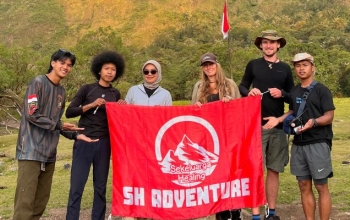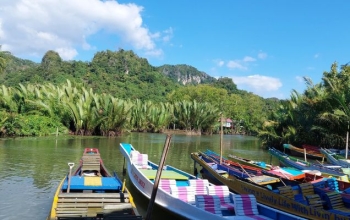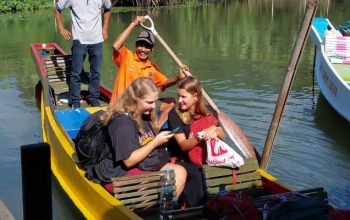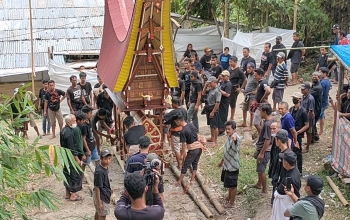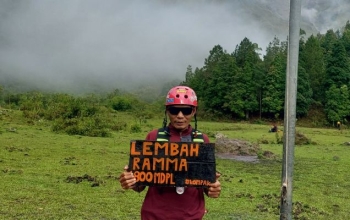- Selamat datang, silahkan pilih destinasi tujuan Anda, Kami dengan senang hati akan memberikan service terbaik.
Nestled in the highlands of South Sulawesi, Tana Toraja is one of Indonesia’s most captivating cultural and natural destinations. Known for its dramatic mountains, traditional Tongkonan houses, and the world-renowned Rambu Solo’ funeral ceremonies, Toraja offers a window into a way of life that has remained largely untouched by modernity. For travelers seeking authenticity and adventure, this mystical region is a must-visit.
However, getting to Tana Toraja requires some preparation. Most travelers begin their journey at Sultan Hasanuddin International Airport (UPG) in Makassar, the capital of South Sulawesi province. From this gateway, visitors can reach Toraja either by road or by air. This guide explains how to make the journey smoothly, what routes to take, and what you can expect along the way.
Starting Point: Sultan Hasanuddin International Airport
Sultan Hasanuddin International Airport is the main entry point to South Sulawesi. Located about 20 kilometers north of Makassar’s city center, it connects to major Indonesian cities such as Jakarta, Surabaya, Denpasar, Balikpapan, and Manado. The airport is modern and easy to navigate, offering restaurants, money changers, SIM card counters, and transport options.
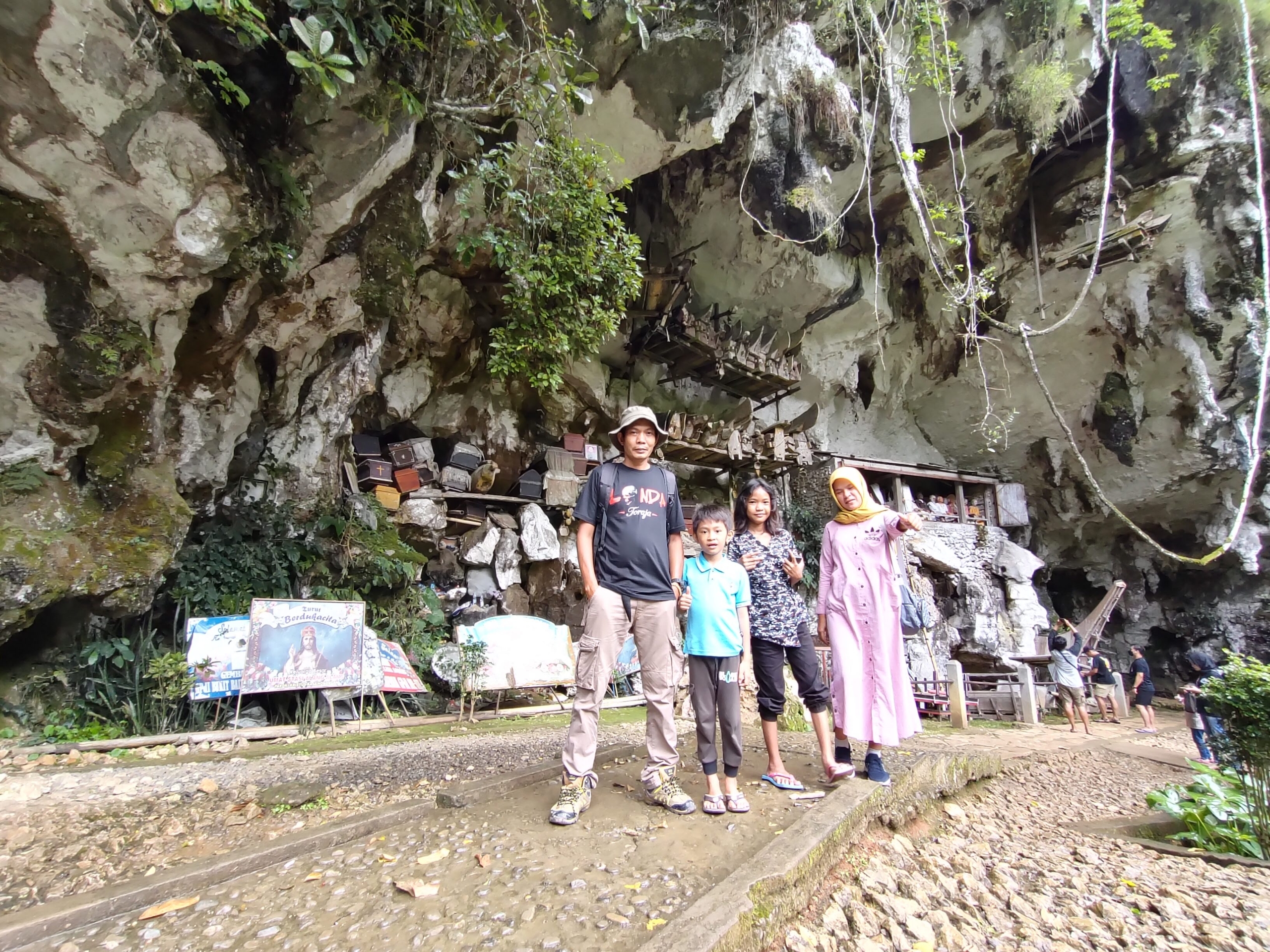
After landing and collecting your baggage, you can choose to travel directly to Tana Toraja or stay overnight in Makassar to rest before continuing the trip. Many travelers who arrive late in the day prefer to spend the night in Makassar, while those arriving in the morning often continue straight to Toraja.
Understanding the Distance and Terrain
Tana Toraja lies around 320 kilometers north of Makassar. Although the distance may not seem far, the mountainous terrain and winding roads mean the journey by land takes approximately 8 to 9 hours. Despite the long duration, the route is extremely scenic, passing through rice fields, fishing villages, hills, and small coastal towns.
For many travelers, the road to Toraja is part of the adventure itself — a gradual transition from the bustling lowlands of Makassar to the misty, spiritual highlands of Toraja.
Traveling by Land
Overland travel is the most popular and affordable way to reach Tana Toraja. The drive offers ever-changing landscapes and a close look at local life in South Sulawesi.
By Bus
Several reputable bus companies operate daily trips between Makassar and Rantepao, the main town in Tana Toraja. Buses typically leave in the evening and arrive the next morning, making them an efficient choice for budget travelers.
Recommended bus companies include:
- Litha & Co
- Bintang Prima
- Bintang Timur
- Metro Permai
Most buses depart from Daya Terminal or the companies’ private offices in Makassar. Some offer airport pickup upon request. The trip lasts about 8–10 hours, and ticket prices range from IDR 200,000 to 350,000 (USD 13–23), depending on the class — regular, VIP, or executive sleeper buses.
Facilities usually include air-conditioning, reclining seats, blankets, and sometimes onboard toilets. If you arrive at the airport in the afternoon, you can take a taxi or ride-hailing service like Grab or Gojek to the terminal, which takes around 30–45 minutes. Evening departures are typically scheduled between 7:00 PM and 9:00 PM.
By Private Car or Van
For travelers who prefer comfort and flexibility, hiring a private car or van with a driver is an excellent option. This allows you to leave directly from the airport and stop whenever you like for photos, meals, or rest.
The route follows the main Trans-Sulawesi highway: Makassar – Maros – Pangkep – Barru – Parepare – Enrekang – Makale – Rantepao. The drive takes around 8–9 hours, depending on traffic and breaks.
The estimated cost for a one-way trip is IDR 1,000,000 to 1,800,000 (USD 65–120) per vehicle, depending on size and comfort level. Most drivers are familiar with the route and can recommend scenic spots and restaurants along the way.
Popular stopovers include Parepare, a coastal town famous for its seafood, and Enrekang, a mountain area known for its coffee plantations and the striking Bambapuang Hill, often nicknamed “Miss Beautiful Hill” for its unique shape.
Self-Drive Option
Adventurous travelers can also rent a car and drive themselves. Car rentals are available at Sultan Hasanuddin Airport and in Makassar city, starting at around IDR 800,000 per day. GPS navigation works well, but be prepared for narrow and winding roads.
Driving in Indonesia requires patience and familiarity with local traffic habits, so this option is best suited for experienced drivers. The reward, however, is the freedom to explore small villages and hidden viewpoints along the route.
Traveling by Air
For those who prefer speed and comfort, flying from Makassar to Tana Toraja is the fastest and most convenient option.
The destination airport is Buntu Kunik Airport (TTR), located near Makale, the main tourism center in Toraja. The flight from Sultan Hasanuddin International Airport takes less than one hour and offers breathtaking aerial views of Sulawesi’s mountains and valleys.
Flight Information
Currently, Wings Air (part of the Lion Air Group) operates regular flights between Makassar and Tana Toraja.
- Route: Makassar (UPG) → Tana Toraja (TTR)
- Flight Time: Approximately 55 minutes
- Frequency: Three to four times per week (subject to change)
- Aircraft Type: ATR-72 turboprop
- Ticket Price: IDR 800,000 – 1,500,000 (USD 50–95) one way
Upon arrival at Pongtiku Airport, taxis or local drivers are available to take you to your hotel in Rantepao or Makale, usually a 15–20 minute drive.
Flying saves a full day of travel and is ideal for visitors with limited time, though tickets should be booked well in advance, especially during the peak tourist season or major ceremonies.
Weather and Schedule Considerations
Because Pongtiku Airport is located in a mountainous region, flights are sometimes delayed or canceled due to weather conditions. Morning flights are generally more reliable. It’s wise to confirm your flight status before departure and keep a backup plan to travel by land if necessary.
The Scenic Journey
Whether you travel by land or air, the journey to Tana Toraja is filled with beauty and surprises.
If you choose the overland route, you will experience a gradual change in scenery — from the flat coastal plains near Makassar to the rolling hills of Enrekang and finally the misty valleys of Toraja.
Highlights along the way include:
- The Karst Maros-Pangkep area, one of the largest limestone formations in the world, located just outside Makassar.
- The lively markets and fishing ports of Pangkep and Barru, perfect for a quick food stop.
- The scenic Parepare Bay, where travelers often enjoy lunch with ocean views.
- The Enrekang Highlands, offering panoramic viewpoints of valleys and cliffs.
As you approach Makale and Rantepao, you’ll notice traditional Tongkonan houses with their boat-shaped roofs dotting the landscape — a sure sign that you’ve arrived in the land of the Toraja.
Best Time to Visit
The best time to travel to Tana Toraja is during the dry season, from June to October, when the weather is clear and roads are in good condition. The rainy season, from November to March, can cause slippery roads and occasional landslides in the mountains.
If your goal is to witness Rambu Solo’, the famous Torajan funeral ceremony, plan your trip between November and January, when most of these rituals take place. During this period, accommodation should be booked early as many domestic and international visitors come to Toraja.
Practical Travel Tips
To make your trip more comfortable, here are some helpful suggestions:
- Book transportation and hotels in advance, especially during the holiday or ceremony seasons.
- Carry light snacks and bottled water for the journey.
- Dress comfortably and bring a light jacket — temperatures in Toraja can drop below 20°C at night.
- Bring motion sickness medicine if you’re sensitive to winding mountain roads.
- Plan rest stops in towns like Parepare or Enrekang for food and restrooms.
- Keep small cash on hand, as many roadside shops do not accept cards.
- Charge your devices before departure, since buses and small cars may not have power outlets.
- Respect local customs and ask before taking photos of people or ceremonies.
Arriving in Tana Toraja
Once you reach Rantepao or Makale, you’ll immediately feel the difference — cooler air, serene mountains, and the distinct architecture of Tongkonan houses. These two towns serve as the main hubs for exploring the Toraja highlands.
Popular attractions include:
- Lemo, a cliff burial site with wooden effigies known as Tau-tau.
- Londa, a cave complex where ancestral remains are kept.
- Kete Kesu, a traditional village and cultural heritage site.
- Bori Parinding, home to ancient megalithic stones.
- Local markets offering Toraja coffee, wood carvings, and handmade textiles.
Guided tours are available for visitors who wish to learn more about Toraja’s rich culture and history. Many lodges and homestays can arrange transportation and local guides.
A Journey Worth the Effort
Traveling from Sultan Hasanuddin International Airport to Tana Toraja is more than a transfer — it’s a passage through landscapes, cultures, and time itself. Whether you choose the scenic 9-hour road trip or the short 1-hour flight, each path reveals a different side of Sulawesi’s beauty.
As you ascend from the warm coastal plains into Toraja’s cool highlands, the rhythm of life slows, and the air becomes fresher. You’ll see buffalo grazing in green valleys, farmers working in rice terraces, and children waving from roadside villages.
By the time you arrive in Rantepao, you’ll realize that the journey was as rewarding as the destination. The road to Tana Toraja is not just a route — it’s an adventure into the heart of Indonesia’s living traditions.
Mungkin Anda tertarik membaca artikel berikut ini.

Rute Pendakian Lembah Ramma via Lembanna: Panduan Lengkap dan Terkini
Sulawesi Selatan bukan hanya tentang Pantai Losari, kuliner khas Makassar, atau sejarah kerajaan Gowa. Di balik hiruk pikuk kota, tersimpan surga tersembunyi di kaki Gunung Bawakaraeng, yakni Lembah Ramma. Lembah ini terkenal dengan panorama padang rumput luas, hutan pinus yang menawan, udara sejuk, serta pemandangan megah Puncak Bawakaraeng yang menjulang d... selengkapnya

5 Kelebihan Lembah Lohe Gowa, Destinasi Alam Eksotis di Kaki Gunung Bawakaraeng
Sulawesi Selatan terkenal dengan pesona alamnya yang beragam, mulai dari pantai, pegunungan, hingga lembah yang memukau. Salah satu destinasi yang belakangan ini semakin banyak menarik perhatian para pecinta alam adalah Lembah Lohe. Terletak di Kabupaten Gowa, lembah ini berada di kawasan kaki Gunung Bawakaraeng, gunung yang dikenal sakral sekaligus populer ... selengkapnya
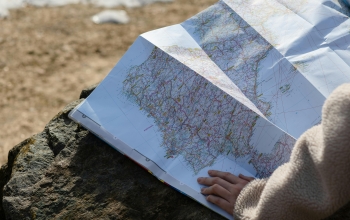
Pengetahuan Dasar Orientasi Peta dan Navigasi Darat
Orientasi peta dan navigasi darat merupakan keterampilan dasar yang sangat penting bagi siapa pun yang sering melakukan kegiatan di alam bebas, seperti pendaki gunung, pramuka, anggota pencinta alam, hingga personel militer. Pengetahuan ini memungkinkan seseorang untuk menentukan posisi, arah, dan rute perjalanan dengan tepat, meskipun berada di daerah terpe... selengkapnya
Kontak Kami
Apabila ada yang ditanyakan, silahkan hubungi kami melalui kontak di bawah ini.
-
Hotline
081316026384 -
Whatsapp
081316026384 -
Email
amiruddinemail@gmail.com

